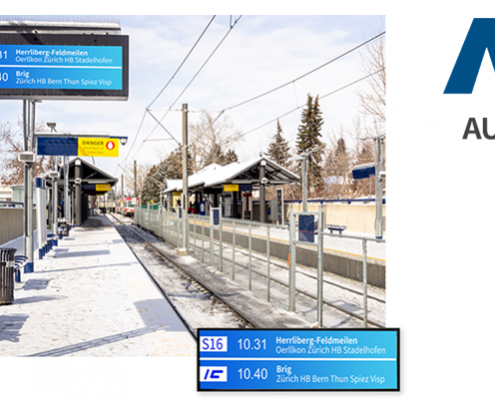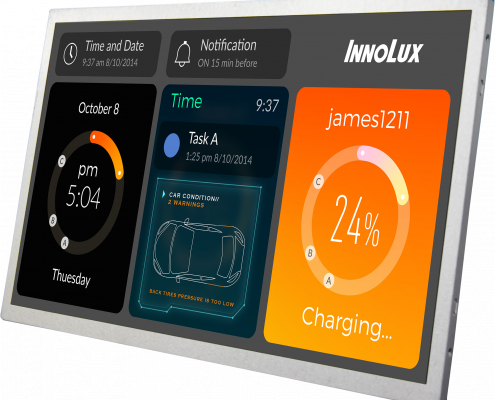
Glass guardians: display technology’s transparent armor
We have it in front of our faces every day, but only pay it any attention if it breaks. A layer of transparent coverglass sits over all the display panels that we use every day – in smartphones and tablets, televisions and monitors – and is essential in guarding the delicate electronics underneath, while also enhancing the quality of the display.

AMOLED: The luxe display that’s not for everyone
Ultra thin and ultra light, with outstanding optical performance, Active Matrix OLED displays have been a staple technology for smartphones and smaller consumer applications since around 2009. Happily, these small, powerful displays have recently grown in size, opening up opportunities for their use beyond handheld applications.

Wireless PCAP Technology: efficiency comes cable free.
Cables. We expect, like us, you have a love/hate relationship with them. On the one hand, for most applications when a TFT is connected to a touch, the complete Stack is connected over a short cable to a board. And that works just fine. After all, for this kind of application, a wireless PCAP makes no sense.

Bringing clarity to the world of MIPI and LVDS
Where displays are concerned, plenty of acronyms fly around. MIPI is one, LVDS and RGB/TTL are some others. You’d expect all three to be completely different, but life is never that precise, is it? For example, MIPI displays also use LVDS standards and as puzzling as that might sound, there are actually some fairly sound reasons for it.

New! 3.5” QVGA display for indoor applications
Our partners at Tianma have just released a thinner, smaller, lower cost QVGA display, ideal for the industrial market, HVAC systems or anywhere that requires a smaller HMI.

Sensitive sensors without the ghosts: Avnet HMIs for surgery are strong, safe and reliable
Capacitive sensors are great – highly reliable and have a wide range of functions. But in the medical world there are some very particular requirements around the service life of such sensitive sensor technologies.

The world isn’t standard, and neither are TARTAN displays!
Stretched displays are readily available in a wide variety of standard sizes (from sizes 23.6” to 58.4”), but our customers frequently require them to be tailored to the specific needs of their applications. So, when size matters, the flexibility of TARTAN, part of the AUO Display Plus series family, could be just what you need.

Upgrade your input and swap membrane keys for PCAP
We are frequently asked if we can replace old membrane keypads with a new PCAP design. It makes sense, as the membrane design can present many problems – particularly as it ages. Simply put, membrane keys are less durable and their PET foil, which controls responsiveness, can and will break with frequent use.

Innolux High Brightness TFT displays: designed for the great outdoors
Plenty of displays need to be able to cope with the varying demands of outdoor use – think EV chargers, construction sites, agricultural vehicles, boats and many more. Displays in these highly variable locations are not only exposed to the elements but feel the full force of heavy duty use every day. As a result, Innolux has launched a new line of high brightness TFT displays that are more than up to the challenge.

PCAP in automotive applications? Yes, we can!
Capacitive sensors are great – highly reliable and have a wide range of functions. You can’t argue with their usefulness in household electronics, especially as panels in such products are becoming thinner and lighter with almost every iteration. In the automotive world, however, this isn’t exactly desirable. In this industry, sensitive sensor technology is subject to stricter requirements, both in terms of service life and environmental influences.

